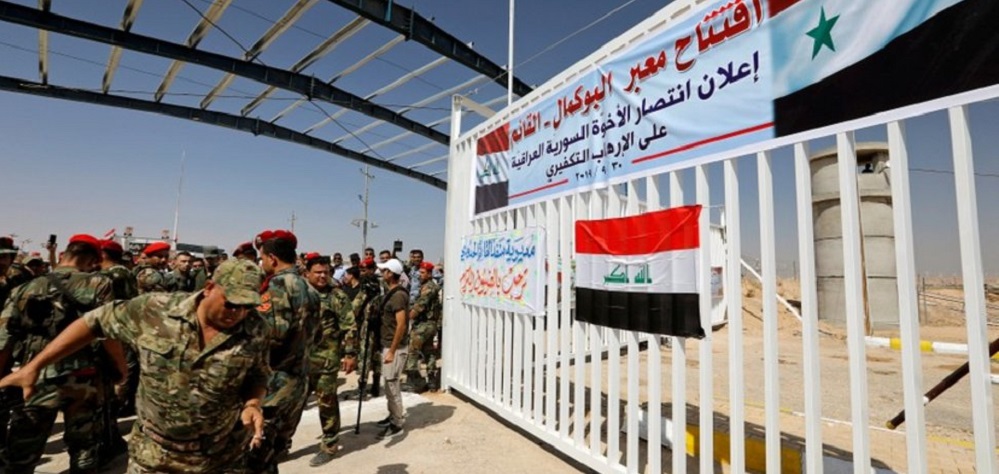Alwaght- Although the ISIS was announced obliterated in Iraq in 2017, terrorism and protection of the country’s borders against threats posed by remnants of the terrorist group remain a significant issue for Baghdad.
Even in the post-ISIS period, the shared borders with Syria are of great sensitivity to all of the actors involved in the Iraqi crisis. The main reason why the common borders with Syria matter in the present conditions is the corridor created on the borders by the self-proclaimed ISIS caliphate.
The ISIS during the short life of its de facto state created a connection line between the two countries reaching Mosul in northern Iraq and Raqqa, the so-called capital of the caliphate, in Syria’s northeast.
In addition to the ISIS, the military focus and deployment of the players active in the Syrian crisis on the border regions with Iraq over the past years of war gave special significance to the ground borders between the two Arab countries. This continued even under Iraq’s new Prime Minister Mostafa al-Kadhimi who seeks to take measures to tighten the control over this border region.
Recent reports emanating from Baghdad suggest that the Iraqi military intelligence commanders who act under the direct supervision of the ministry of defense held a meeting to discuss the security circumstances in the border regions with Syria.
According to a military intelligence statement, the leaders of the body discussed the latest security developments on the Iraq-Syrian borders and the future measures to boost the security levels and keep an eye on the suspicious movement of terrorist factions.
But as the shreds of evidence show, the Iraqi government is likely planning to give some changes to the way its forces are stationed in the border area. It is not only al-Kadhimi who seeks to take a new strategy on the shared borders with Syria. Foreign actors especially the US is very closely following the Iraqi military makeup on the border with Syria.
Strategic considerations of the rival actors on the Syrian-Iraqi borders
Iraq and Syria share 605 kilometers of ground borders, a major part of which lies along Syria’s Deir ez-Zor and Iraq’s Al-Anbar.
Under the new conditions, in the mysterious rivalry to take control of the shared border regions, there are two competitors: One is the Axis of Resistance that includes Iran and its regional allies which after the crises caused by the rise of ISIS looked the Syrian-Iraqi borders as the heart of their bonds and strategic influence in the region.
On the opposite side is the US, Israeli regime, and some of the Persian Gulf Arab monarchies which want the borders to be controlled by forces other than Iraq’s Popular Mobilization Forces (PMF), or locally Hashd al-Sha’abi. Their final goal is to see the border region with Syria to be controlled by the Iraqi military forces, something helping weaken the Resistance camp’s influence in the whole West Asia region. Although before the emergence of ISIS sway on the borders was not a significant issue, in the new era gaining control of the Syrian-Iraqi borders became of extraordinary significance for two opposite sides.
Strategic Al-Qa’em (Abu Kamal) border crossing, the focal point in the competition
A look at the alliances demonstrates that the strategic rivalry between the two sides in the Iraqi-Syrian developments is focusing on a border crossing known in Iraq Al-Qa’em and in Syria Abu Kamal. On the Syrian side, the border crossing is located in Deir ez-Zor in the south of Euphrates River in the extreme southeast of Syria. The Iraqi part of it is located in Al-Anbar province in Iraq’s west. The vital border gate was closed down when ISIS emerged in late 2013. It was reopened in late September last year as the situation backed to normal.
In the liberation of the border crossing area and protection of the regions around it, the PMF played an undeniably distinguished role. Even after ISIS obliteration was announced officially, the voluntary force kept guarding the border crossing which is located in a desert.
But now Washington and Tel Aviv seek, through pressures, to persuade the Iraqi PM to give the administration of the crossing, which has a key place in security and Syrian-Iraqi trade, to the army forces.
Although this request and reasoning in the first place do not look reasonable, the leading goal is the removal of the PMF military bases on the borders with Syria. To put it simply, the Americans want the Hashd forces away from the border regions.
Washington seeks four objectives behind this intention
1. Undermining the PMF’s position geopolitically and politically.
2. Distancing the PMF from borders. This can open the US hands to revive ISIS and use it as an excuse to justify its military stay in Iraq.
3. Causing gaps among the Iraqi armed forces through dragging the PMF into a confrontation with the army and government.
4. Another objective is to cut off bonds of the Axis of Resistance across the region. But this remains a dream with regard to the power boost the Resistance is getting day by day.



























